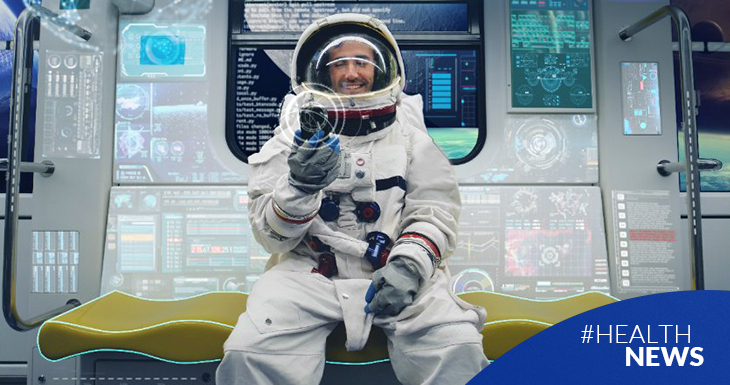NASA achieves a milestone by establishing holographic communication between a team of researchers on the ground and an astronaut on the International Space Station. This technology opens the door to a new form of medical care in remote areas.
NASA has managed to get inside the International Space Station and have a personal conversation with French astronaut Thomas Pesquet. A technological milestone that opens the door to a new variant of telemedicine and that could solve medical care in remote areas of the planet and in space.
Holoported humans
As NASA reports, flight surgeon Josef Schmid, AEXA Aerospace industry partner Fernando De La Pena Llaca, and their teams became the first humans "holoported" from Earth to space. This technological milestone has been possible thanks to the Microsoft Hololens Kinect camera and specific software created by the Aexa company, which allowed the astronaut and the ground crew to have a two-way conversation with live images of Schmid and De La Pena in the middle of the International Space Station.
However, what is really striking about this technology is that it has managed to compress and send high-quality 3D images of people live and in real time at a distance of more than 400 kilometers above sea level. This technology combined with mixed reality systems is what facilitates interaction between people as if they really shared a single physical space.
Holographic communication in medical emergencies
But what are the practical applications of this type of technology?
In situations of loneliness and isolation such as those experienced by astronauts on the International Space Station, holographic communication can be essential to visually repair components and put astronauts and their families in contact, at least visually. But where it can really play a fundamental role is in a medical and psychological emergency.
Mixed reality has already been successfully tested in various medical disciplines. In the field of education, for example, these simulators facilitate the training of medical students in performing catheterizations, endoscopies, interventions, etc., but without any risk to the patient.
Virtual reality to perform surgical interventions
Virtual reality has also become an ally for performing surgeries and interventions that require a specific skill. One of the applications of this tool is remote surgery with the help of a robot, although there have also been cases in which the surgeon provides virtual help to another during an intervention.
Finally, virtual reality has also shown its usefulness in the treatment of phobias and other psychological disorders.
These three examples can be clearly extrapolated to holographic technology. In the field of training, a doctor can show an astronaut from the ground and in great detail how to carry out a cure, while a dentist can graphically show him how to alleviate a bothersome toothache or even perform an extraction. And in case they need psychological help, especially after several weeks alone in space, a psychologist can hold a personal session with their patient to provide assistance.
These are applications that show the progress that telemedicine has experienced in recent years and that contribute to reducing the physical separation between medical professionals and patients and improving people's quality of life.
FUENTE: www.rocheplus.es


